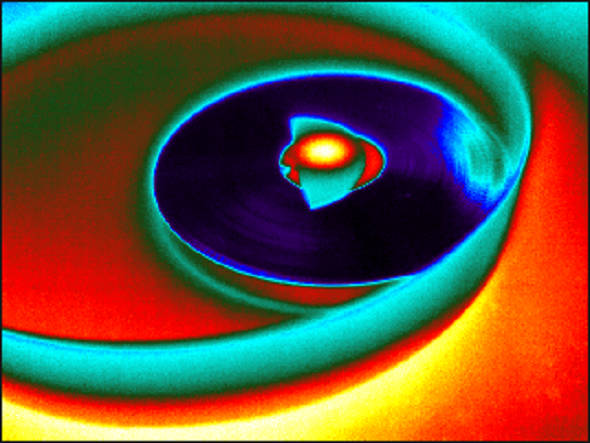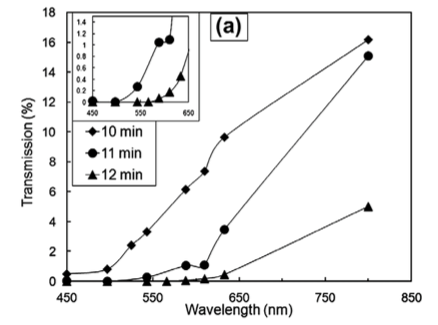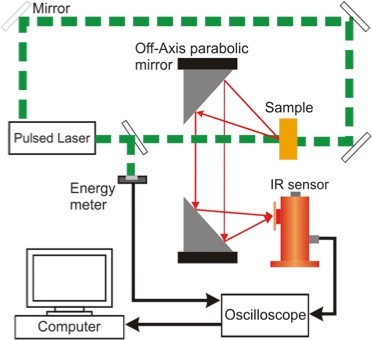CICESE: Santiago Camacho-López (lead); UCR: Guillermo Aguilar & Javier Garay — Thrust 2
Optical: The linear and nonlinear optical properties of the polycrystalline ceramics considered here are of great importance for the WttB platform. Photoluminescence would make active WttB devices possible with integrated waveguide lasers. Waveguides or even more complex photonic structures, written by exposing the ceramic to femtosecond laser (fs-laser) irradiation, are created by modification of the refractive index of the transparent material. Study and characterization of the origin and nature of the refractive index change will allow optimization of WttB materials synthesis. Linear: Transmission and absorption spectroscopic characterization of nc-YSZ implants has been performed; however, we will continue to characterize samples as new nc-YSZ compositions are generated to identify optimal optical and mechanical implant properties using standard spectrophotometric equipment (Ocean optics UV-VIS-NIR spectrometer). Nonlinear: Nonlinear refractive index and absorption characterization is of major importance for the integration of complex photonic devices into the WttB platform. Photoluminescence: A main feature of the WttB platform will be integrated waveguides and more complex photonic structures. These features could be passive elements although, since nc-YSZ displays luminescence under optical pumping, characterization of their luminescence properties is highly relevant to the designing of a lasing WttB platform. Refractive index modification and direct fs laser writing of waveguides: We recently reported the formation of waveguides in bulk polycrystalline ceramics. However, to date, the origin and nature of the laser-induced refractive index increment in nc-YSZ remain unknown. One hypothesis correlates refractive index changes to the suppression of oxygen vacancies generated during material synthesis. It should be noted here that detailed characterization of laser-induced refractive index modification of the polycrystalline ceramics must be integrated and feedback with the systematic control of material synthesis.
Thermal: In view of their temperature-dependent linear and nonlinear optical properties, WttB candidate materials must be thermally characterized after synthesis and for the range of temperatures expected during annealing and laser post-processing. Mechanical: WttB materials have to withstand demanding mechanical conditions, since the implants are envisioned as substitutes for skull sections. Apart from being shaped to fit skull geometry, for instance, implants will be exposed to laser-induced stress. Therefore, mechanical characterization will assess shaping versatility and capacity to withstand thermal stresses. Scientific/technological goals: The goal of optical, thermal and mechanical characterization of the nc-YSZ is to optimize synthesis parameters to produce photonic devices with excellent optical features supported in stable WttB substrates. Collateral scientific studies: These include laser-processing/net-shape forming of the ceramic substrates; laser-induced refractive index increment; biocompatibility; and optical fiber integration with the substrates to complete the WttB platform.




Leave a Reply